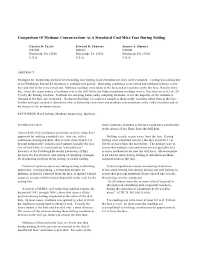Mining Publication: Comparison of Methane Concentrations at a Simulated Coal Mine Face During Bolting
Original creation date: April 1999
Strategies for monitoring methane levels during roof bolting in an extended cut entry were evaluated. Testing was conducted at the Pittsburgh Research Laboratory's methane test gallery. Operating conditions were varied and methane releases at the face and drill holes were simulated. Methane readings were taken at the face, and at locations outby the face. Results show that, when the major source of methane was at the drill holes, the highest methane readings were at locations on or 6.1m inby the bolting machine. Methods for selecting better outby sampling locations, when the majority of the methane is released at the face, are examined. During roof bolting, it is easier to sample at these outby locations rather than at the face. Further testing is needed to determine what relationship exists between methane concentration at the outby locations and at the source of the methane release.
Authors: CD Taylor, ED Thimons, JA Zimmer
Peer Reviewed Journal Article - April 1999
NIOSHTIC2 Number: 20000820
J Mine Vent Soc S Afr 1999 Apr 52(2):48-52
See Also
- CFD Modeling of Methane Distribution at a Continuous Miner Face With Various Curtain Setback Distances
- Effect of Water Sprays on Airflow Movement and Methane Dilution at the Working Face
- Effects of Water Sprays Used With a Machine-Mounted Scrubber on Face Methane Concentrations
- Guidelines for the Control and Monitoring of Methane Gas on Continuous Mining Operations
- Impact of Unbalanced Intake and Scrubber Flows on Face Methane Concentrations
- Predicting Methane Emissions from Longer Longwall Faces by Analysis of Emission Contributors
- Prediction of Longwall Methane Emissions and the Associated Consequences of Increasing Longwall Face Lengths: A Case Study in the Pittsburgh Coalbed
- Simulation of Methane Flows in Noncoal Mines
- Technology News 465 - Method for Predicting Methane Emissions on Extended Longwall Faces
- Using Ultrasonic Anemometers to Evaluate Face Ventilation Conditions
- Content source: National Institute for Occupational Safety and Health, Mining Program


 ShareCompartir
ShareCompartir
